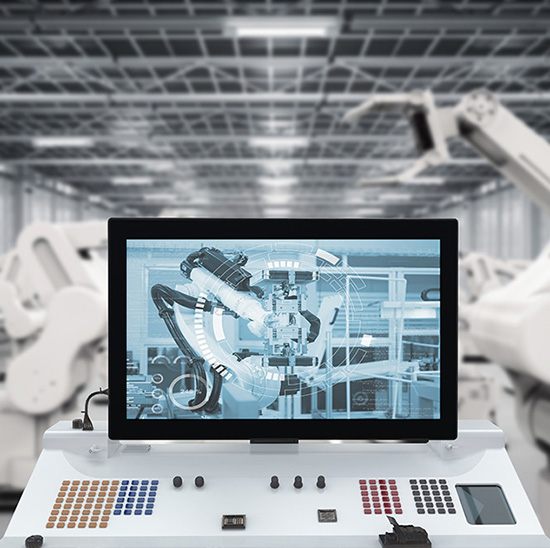In hospitals, where infection control is critical, ultrasound machines play a vital role in diagnostics. The Ultrasound Touch Screen is the interface for clinicians to operate these machines—adjust settings, view images, and manage patient data. But standard touch screens can’t withstand frequent sterilization (a must in healthcare) and easily harbor germs. Sterilizable Ultrasound Touch Screens solve this: built to endure harsh cleaning agents and high-frequency disinfection while staying responsive. This guide explores what makes them sterilizable, how they enhance hospital workflows, and key considerations for choosing the right one—helping healthcare facilities balance hygiene and efficiency.

What Makes an Ultrasound Touch Screen Sterilizable?
1. Specialized Hygienic Materials
Antimicrobial coatings: The screen surface has coatings (like silver ion or copper-based) that inhibit bacteria, virus, and fungi growth between cleanings.
Chemically resistant glass: Uses tempered glass or polymer films that resist damage from common hospital disinfectants (e.g., quaternary ammonium compounds, hydrogen peroxide wipes). These materials won’t crack, discolor, or lose touch sensitivity after repeated exposure.
Sealed edges: Gaps around the screen (where dirt and germs often hide) are sealed with medical-grade silicone or epoxy, preventing contaminants from seeping in during sterilization.
2. Design for Frequent Sterilizatio
Smooth, non-porous surface: No crevices or textured areas where germs can cling. A perfectly smooth surface ensures disinfectants can reach every part during wiping.
High sterilization cycle tolerance: Can withstand hundreds of sterilization cycles (e.g., daily wipe-downs with harsh agents) without delaminating, fogging, or losing touch functionality.
Waterproofing: IP67 or higher ratings mean the screen can handle liquid disinfectant sprays or submersion (for specialized sterilization methods) without internal damage.
3. Touch Technology Resilience
Capacitive vs. resistive: Advanced capacitive touch technology is preferred—even when the screen is wet (from disinfectants) or has residue, it maintains accuracy. Resistive screens (older tech) can misregister touches after repeated moisture exposure.
Self-calibrating sensors: Some models auto-calibrate touch sensitivity after cleaning, ensuring clinicians don’t have to press harder (which risks contamination from gloved hands) or deal with unresponsive areas.
Benefits of Sterilizable Ultrasound Touch Screens in Hospitals
1. Enhanced Infection Control
Reduced cross-contamination: By surviving frequent, thorough sterilization, these screens lower the risk of pathogens spreading between patients or from surfaces to clinicians. Studies show properly sterilized medical equipment surfaces can reduce HAIs (Healthcare-Associated Infections) by up to 40%.
Compliance with hygiene standards: Meets regulations like CDC’s Guidelines for Disinfection and Sterilization in Healthcare Facilities, easing audit and accreditation processes.
2. Improved Workflow Efficiency
Fast, intuitive operation: Responsive touch screens let sonographers adjust parameters (depth, frequency, gain) quickly during exams, reducing patient scan time.
Durability = less downtime: Since they don’t fail from sterilization, clinics avoid delays from screen repairs or replacements—keeping ultrasound suites running smoothly.
Seamless integration with software: Sterilizable screens work with medical imaging software (e.g., DICOM viewers) without compatibility issues, ensuring clinicians can access patient records and image archives without hiccups.
3. Cost Savings Over Time
Longer lifespan: While upfront costs may be higher than standard screens, their resistance to sterilization damage means they last 3–5 years longer, reducing replacement costs.
Lower HAI-related costs: Fewer infections mean less spending on patient treatment, isolation protocols, and legal liabilities.
How to Choose a Sterilizable Ultrasound Touch Screen
1. Assess Clinical Needs
Specialty focus: Cardiac ultrasound requires high-resolution touch for fine adjustments—prioritize screens with 10-point multi-touch and 1080p+ clarity. For OB/GYN (prenatal scans), larger screens (15–21 inches) help view fetal anatomy details.
Sterilization frequency: If the department sterilizes equipment after every patient (e.g., in COVID units), choose a screen with the highest sterilization cycle rating (500+ cycles).
Environmental factors: In ICUs (high humidity, frequent spills), opt for IP68-rated waterproof screens.
2. Evaluate Technical Specifications
Touch accuracy: Look for <2mm touch error (ensures precise button taps for setting changes). Brightness and visibility: 500+ nits brightness for readability under hospital lighting; anti-glare coating to reduce reflections. Compatibility with ultrasound systems: Confirm the screen works with your brand (GE, Philips, Siemens) and model of ultrasound machine—check manufacturer compatibility lists.
3. Consider Total Cost of Ownership (TCO)
Warranty: A 3–5 year warranty (with coverage for sterilization-related damage) protects your investment. Maintenance and repair: Choose brands with local service centers or easy-to-source replacement parts to minimize downtime. Training support: Some suppliers offer training for staff on optimal cleaning/operation—ensuring the screen is used correctly to maximize lifespan.
FAQs About Sterilizable Ultrasound Touch Screens
Q1: How often should a sterilizable ultrasound touch screen be cleaned?
A1: After every patient use (per hospital infection control policies). The screen’s design lets you clean it that frequently without damage.
Q2: Can I use any disinfectant on these screens?
A2: Most are compatible with common hospital disinfectants (check the manufacturer’s list). Avoid abrasive cleaners or those with high alcohol concentrations (>90%) unless specified.
Q3: Do sterilizable touch screens work with gloves?
A3: Yes—advanced capacitive screens detect touches through latex, nitrile, or vinyl gloves. Some models even work with double-gloved hands.
Q4: What’s the typical lifespan of a sterilizable ultrasound touch screen?
A4: 8–12 years with proper care—significantly longer than standard screens (which last 3–5 years in hospital settings).
Conclusion
Sterilizable Ultrasound Touch Screens are a game-changer for hospitals—marrying strict infection control with smooth clinical workflows. By choosing a screen with the right materials, design, and specs, healthcare facilities can protect patients, support clinicians, and save costs long-term.
If you’re unsure which sterilizable Ultrasound Touch Screen fits your ultrasound machines (e.g., need help matching compatibility, assessing clinical needs, or understanding TCO), fill out the form on our website. Our medical technology experts will analyze your requirements and recommend the ideal solution for your facility.



